CONDITIONED SELF, installation composed of embroidered works on salvaged domestic fabric pieces, 2023, exhibited at WASP as part of the show Tower of Strength- Instances of Sensibility
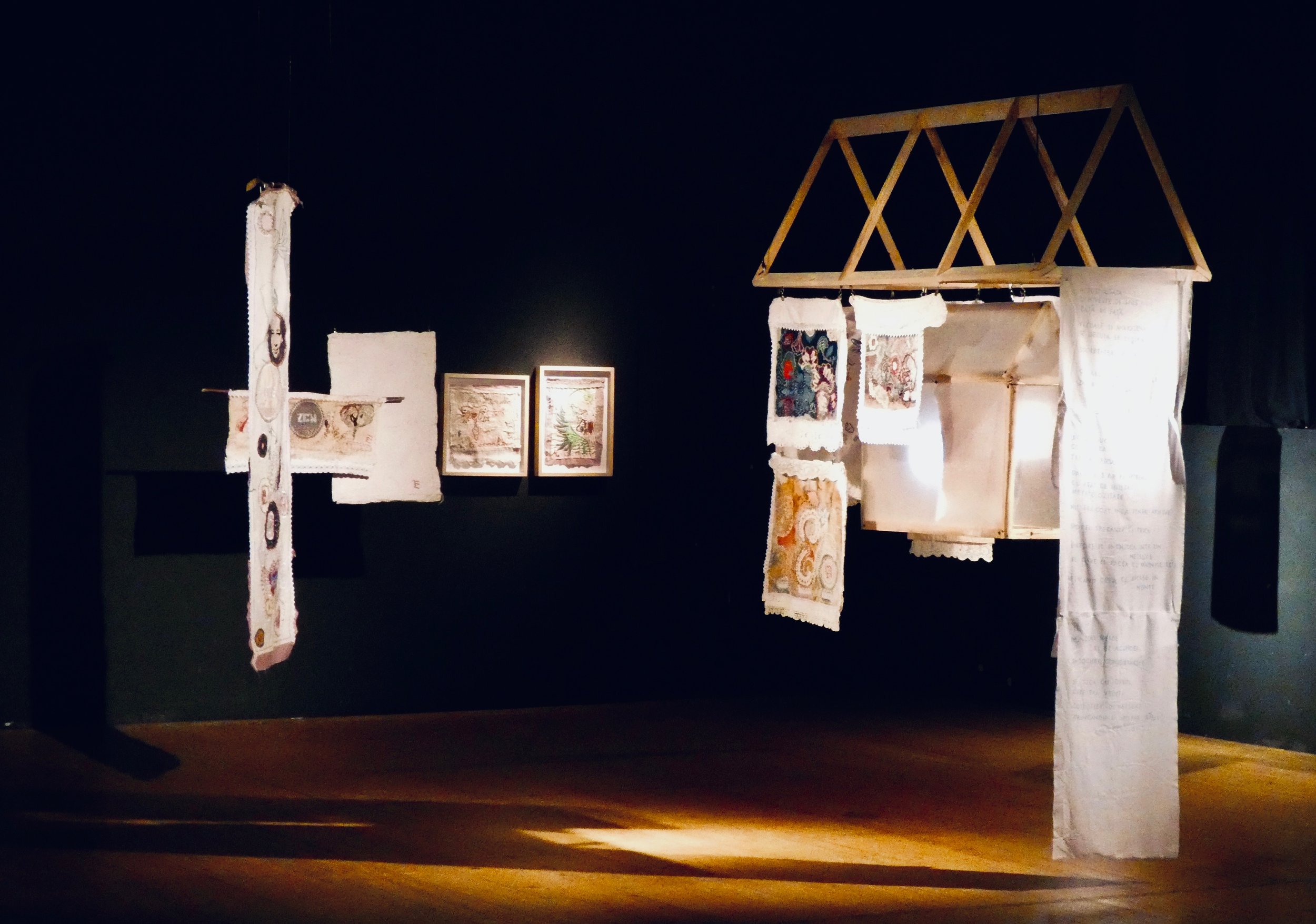




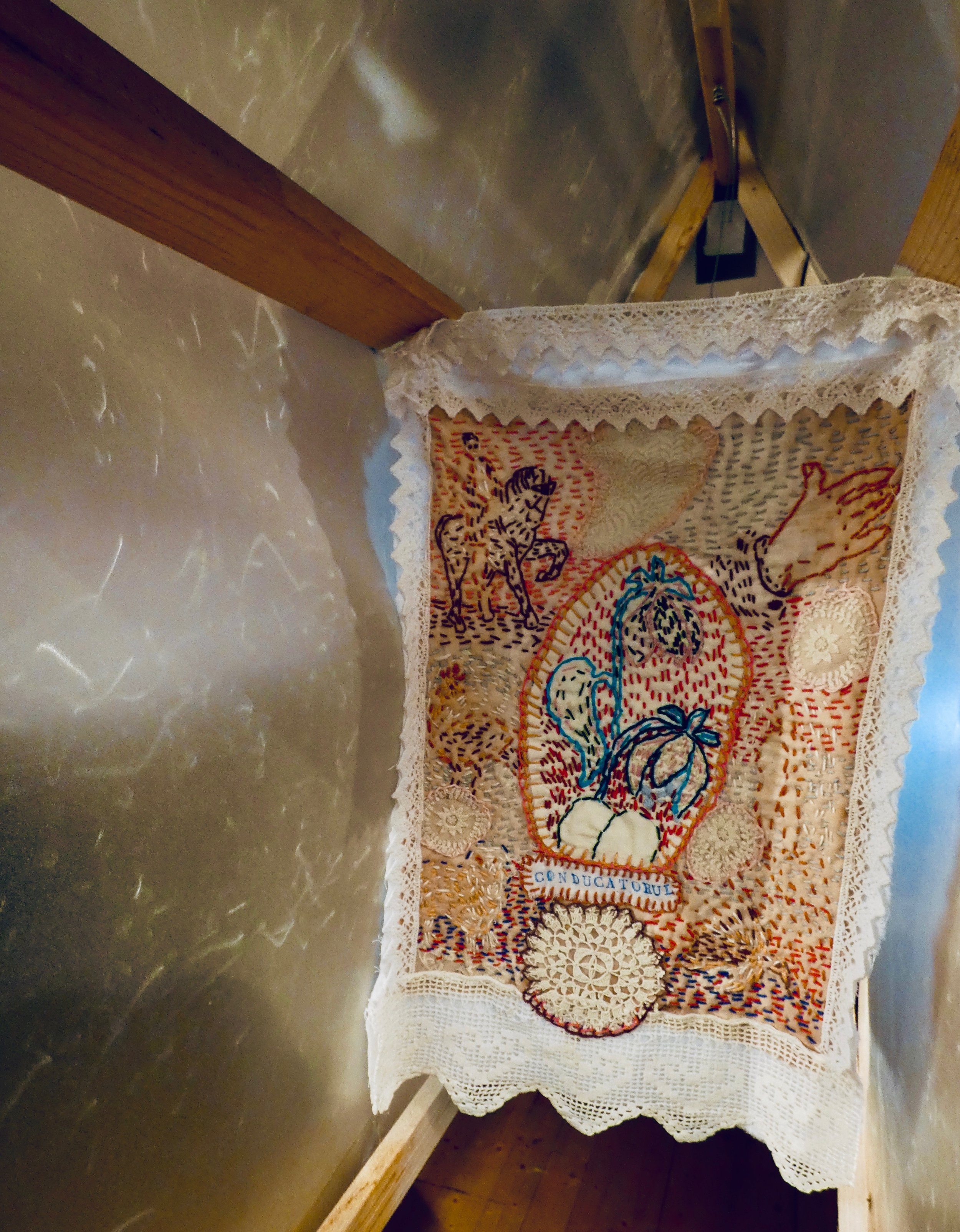


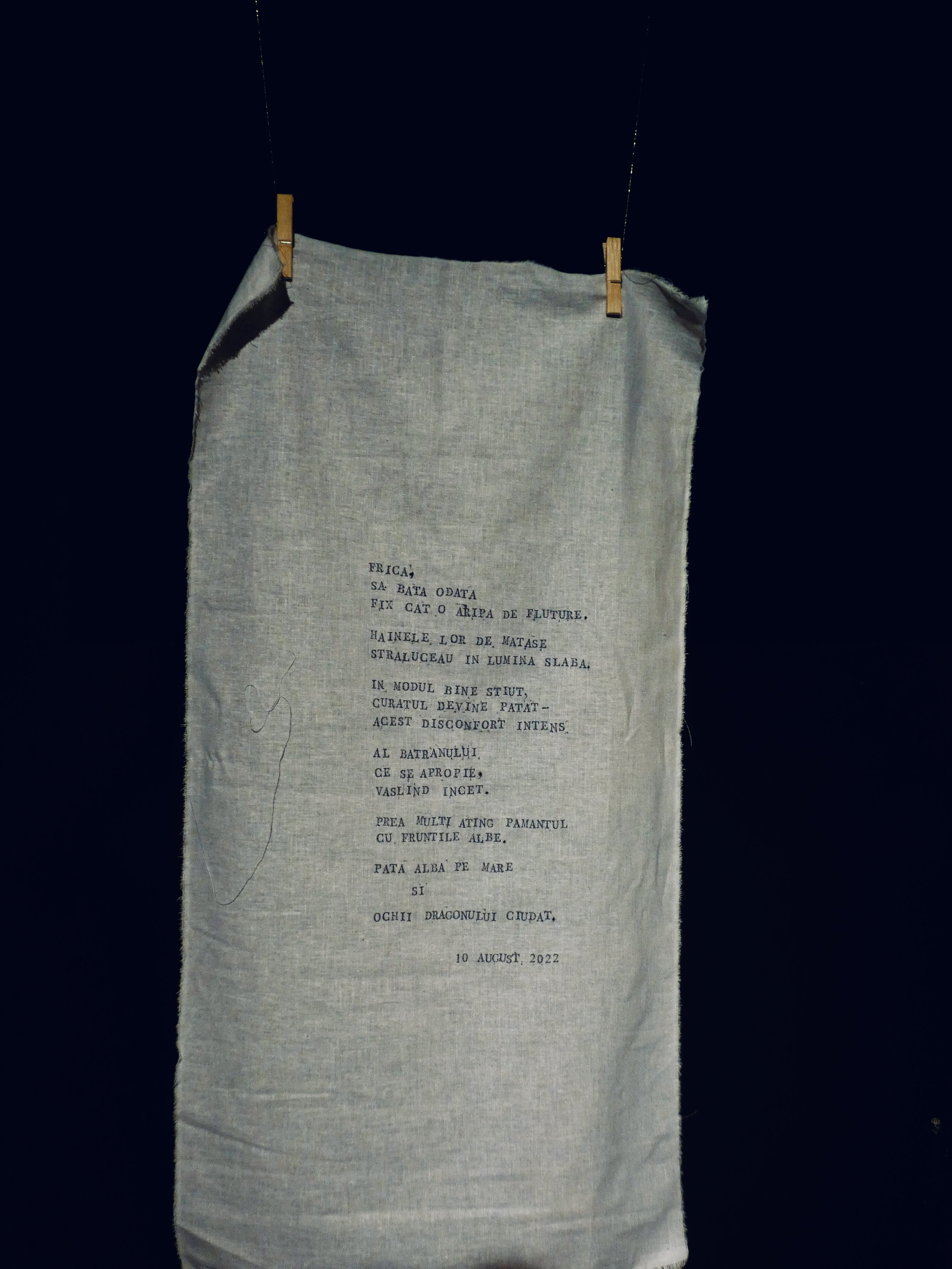

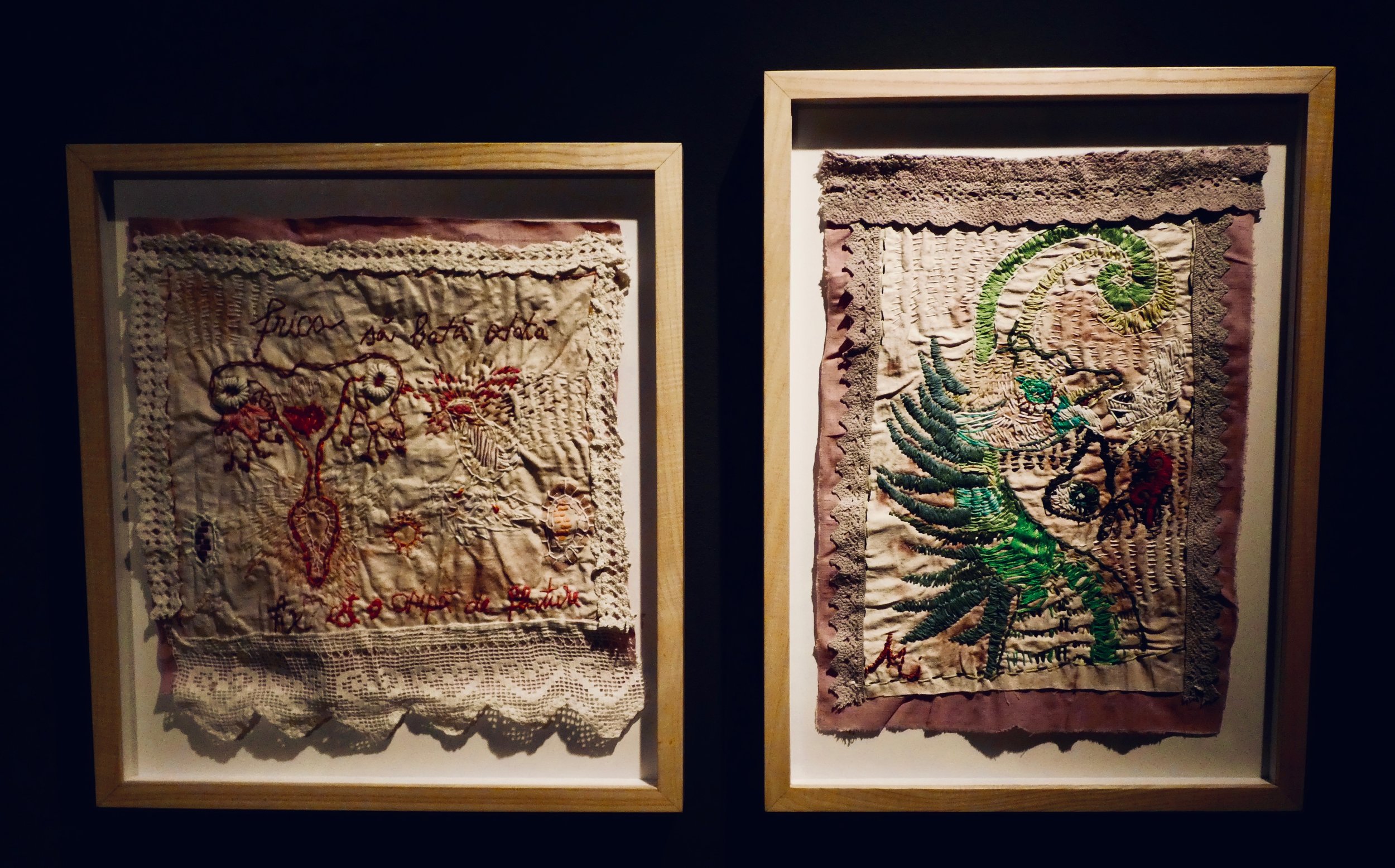
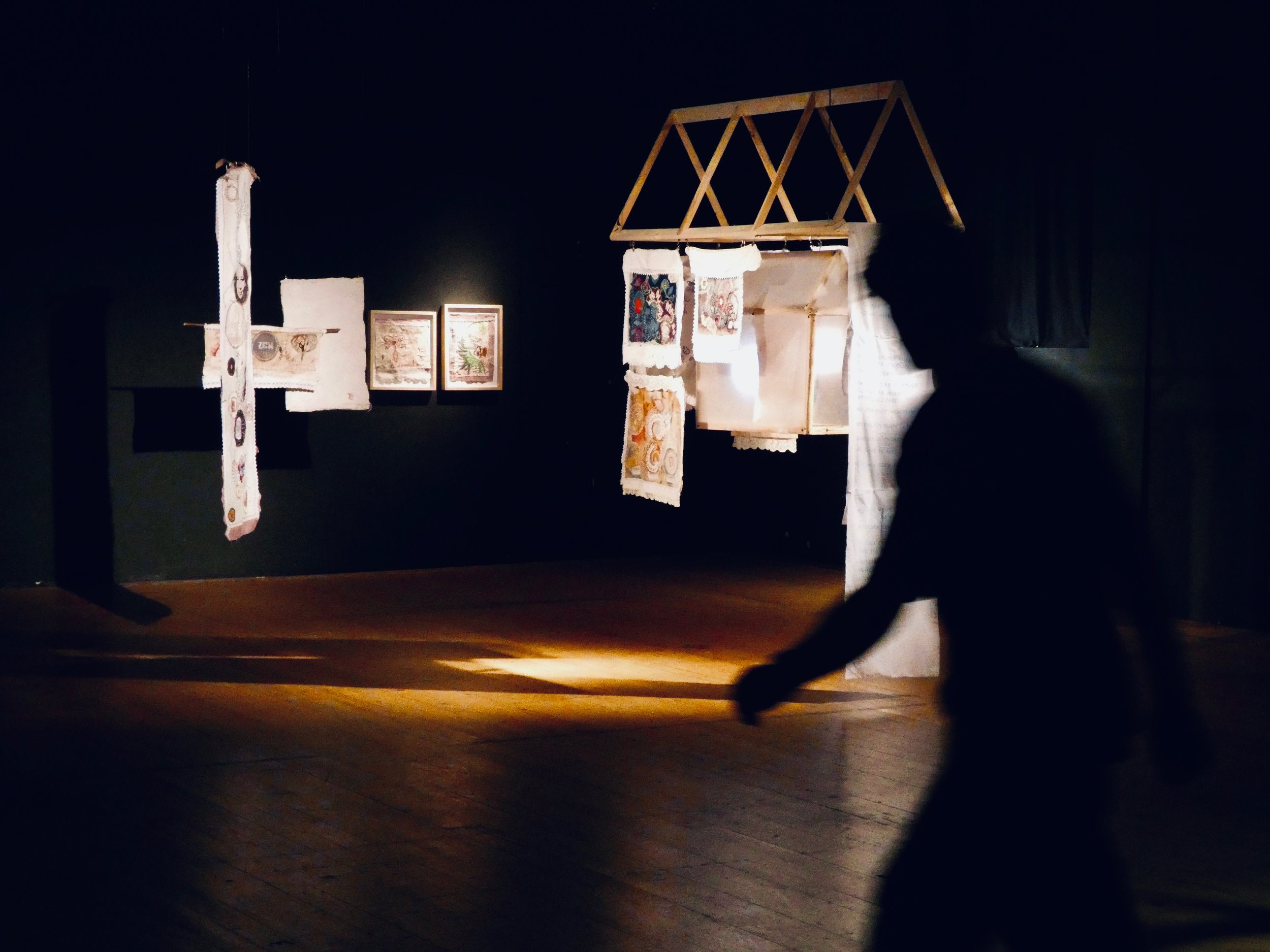

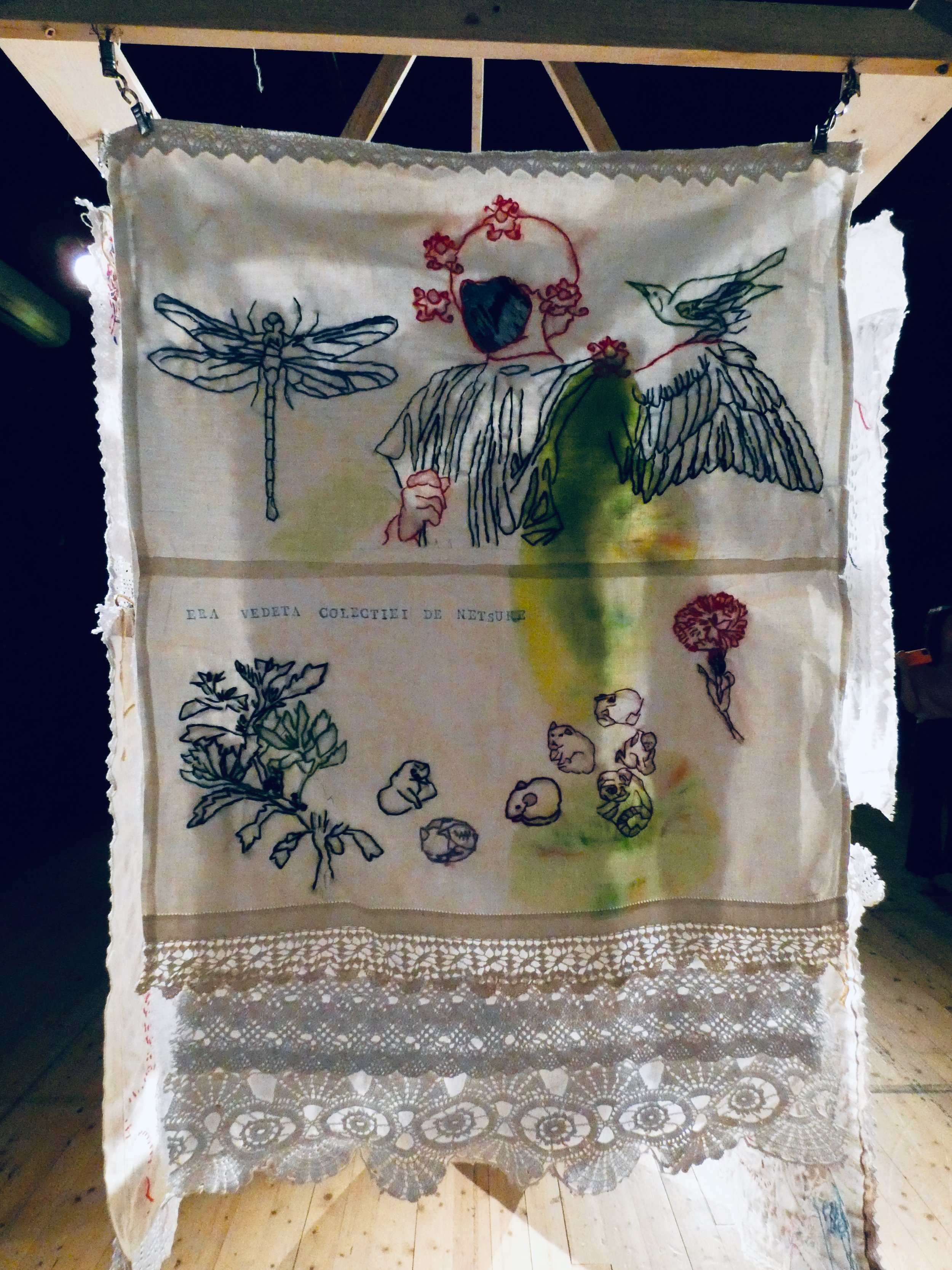
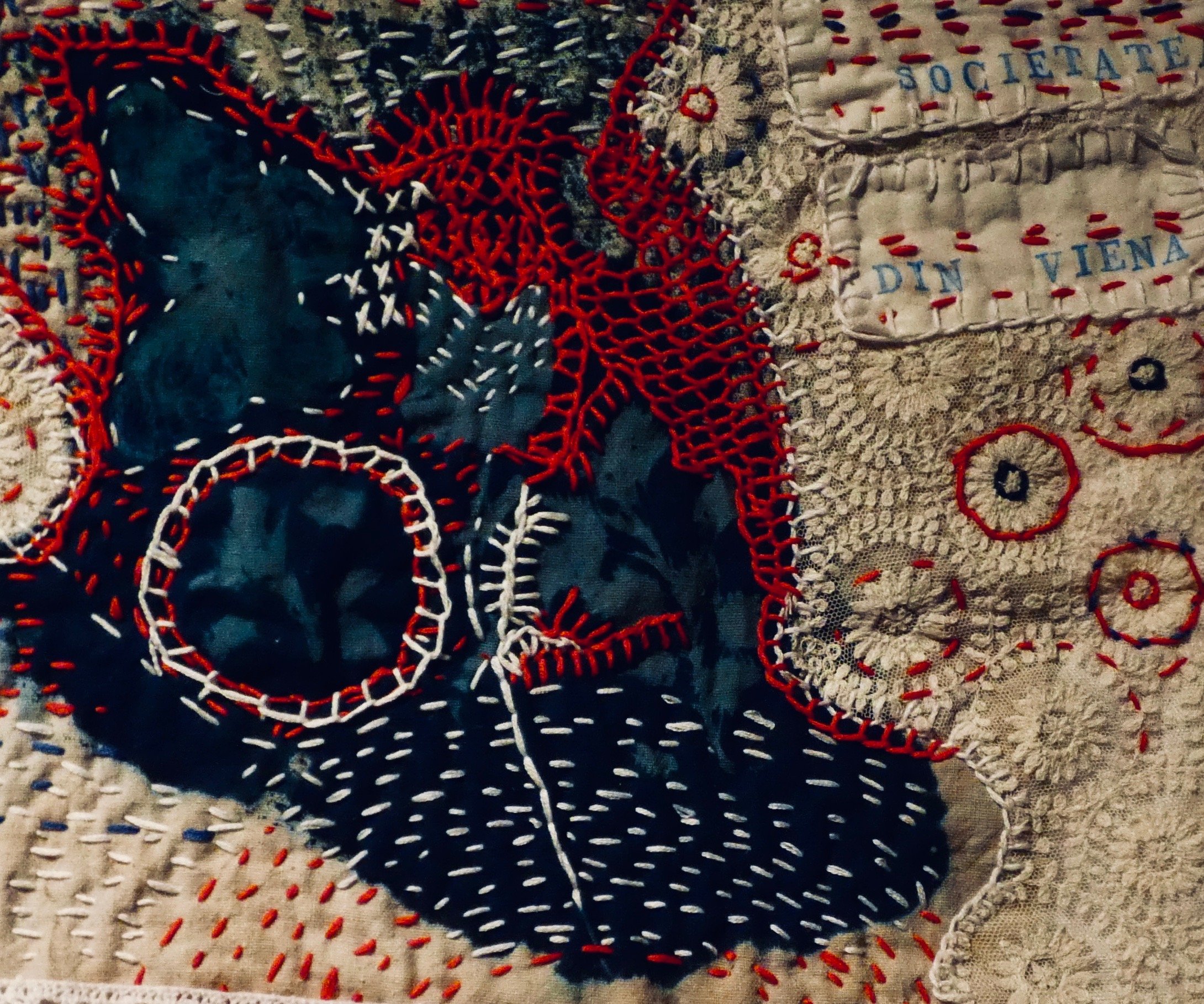
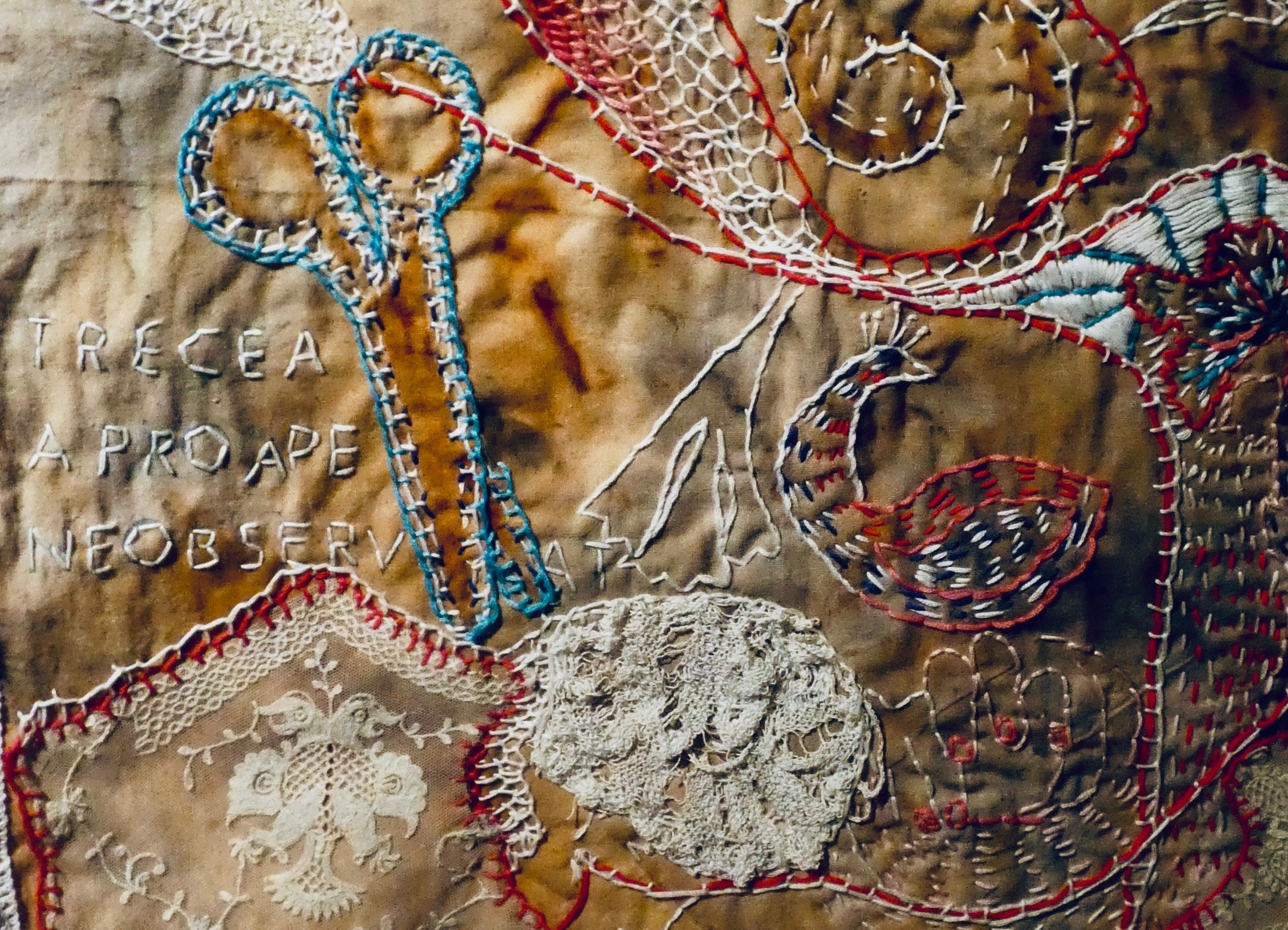
The objects and their memory are threads that connect human relationships, social relationships and identities.
A gift may hold a whole history of a personal relationship, and, not less, unveil the social status, mentality and emotional color of one human being, a family or a whole community. A small netsuke – a Japanese carved wood or ivory figure, usually used to attach a pouch to a kimono piece of clothes – can spark and reveal a whole bunch of histories – some personal, some social ones, such as those told us in the book The hare with the amber eyes, by its author,
Edmund de Waal, a British writer and outstanding contemporary ceramicist.
Interdependence and change are crucial dimensions of our reality.
From the abundance of genre scenes - domestic situations and images -
what remains after time passes? Eventually …objects, household items, such as napkins, tablecloth, clothing items, handkerchiefs or curtains. Stains of red wine or red candle wax on the white tablecloth, mended patches on the napkins or curtains, become story prompts that recreate past or imaginary household scenes.
The imperfections of the old fabrics are emphasized through printing with rust or the old technique of cyanotype. To repair the fabric- to make it clean, to mend it or to stitch it with decorative or symbolic motifs – may become an addictive way of meaning making or a healing pastime. The woven fabric connects us – either clothing items, or domestic items. We are inhabiting them and soak them with our memories. They speak to us about home – most often in terms of distance.
I have started this exploration with a bunch of vintage domestic items, found in an empty house of family members, who died. What could have been yet another reflection on vanitas got rather a different turn. An investigation on change as a process that both takes from us, as well as brings to us. A provocative challenge to understand our interdependent existence – in between and amongst things and relationships that appear and disappear in continuous movement.
Therefore, I have started on building up on a rather shaking ground – a sort of groundless ground. I superposed layers of found words, found images and found textile fragments. Writing (collage poetry), printing (collage images) and
stitching (old applique fragments and embroidered images) were the three main actions and layers.
Fragments from various stories mixed with personal memories, fragments of images of bodies collected from different artistic traditions and historical moments are juxtaposed with plants, birds, or even a mythical sea monster that spits butterflies! Fragments from the European art history are juxtaposed with folk motifs from Mexic, India or Tibet. Bits and pieces from deconstructed doilies, or old lace, are connected with recent or new pieces of lace, hand made or otherwise.
The whole working method directs you towards an acceptance of the imperfection and chaotic aspects of our lives. It pushes you to accept and integrate the broken pieces that require mending, (as well as those that are, mended, just by chance, by someone else.)
The two figures to whom the work brings homage and appreciation, are actually two sides of the same coin. They are also symbolic presences, not only real people.
The first one stands for the traumatic events of the modern European history .
Edmund de Waal’s reconstruction of his family ‘s history starting from the small netsuke sculptures, mixes misfortune with luck, reflecting on issues such as
anti-semitism, migration and exile. The British artist is a famous figure, with a distinctive voice, that can be recognized both in his memoir literature as well as in his sensitive and thoughtful ceramic installations. The luxury of the netsuke collection and its unusual story (…) unveils the trauma of migration.
The stillness of the home place and experience is found in the ceramic installations – through the elegance of their materials’ choice, shapes, textures, colors and light.
The second figure – that of Sofia Negrea- speaks rather about the anonymity of women experience, most often expressed through the work of the hands.
To the poignant stories of the big European history, I am juxtaposing the private histories of the hands work, belonging to a humble Romanian household space. Yet, both deal with processing difficult emotions, revealing untold stories.